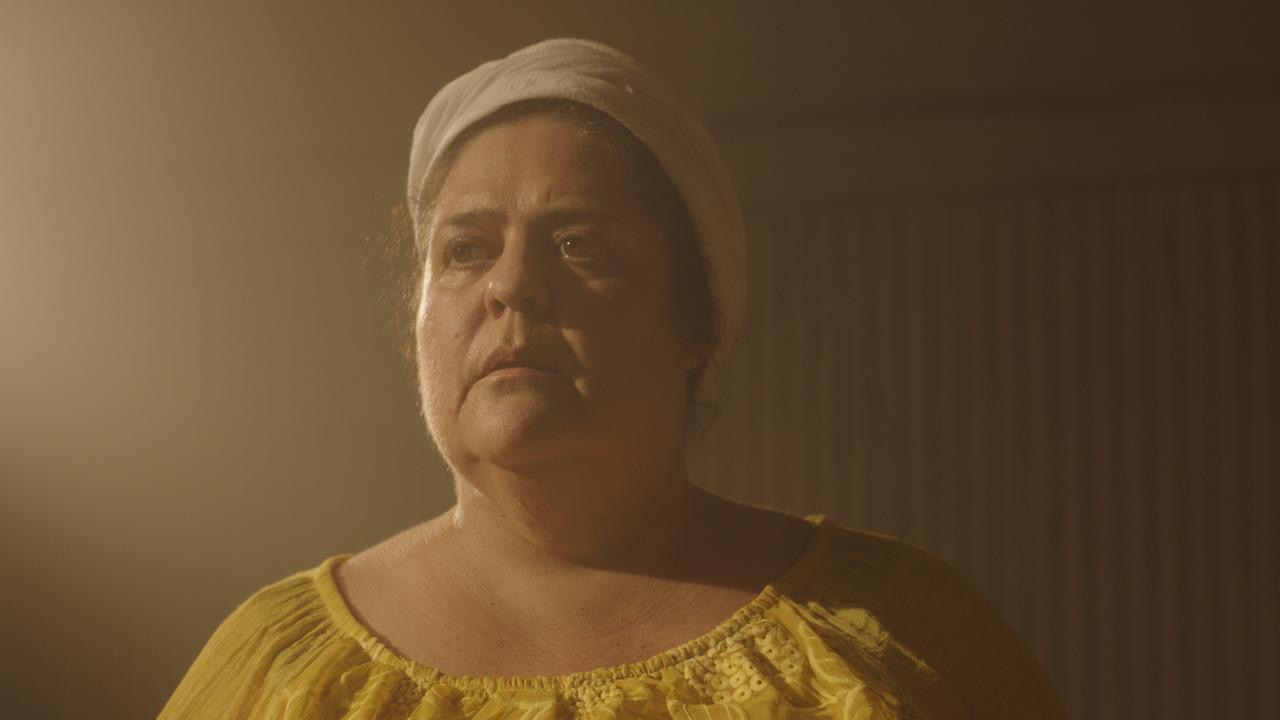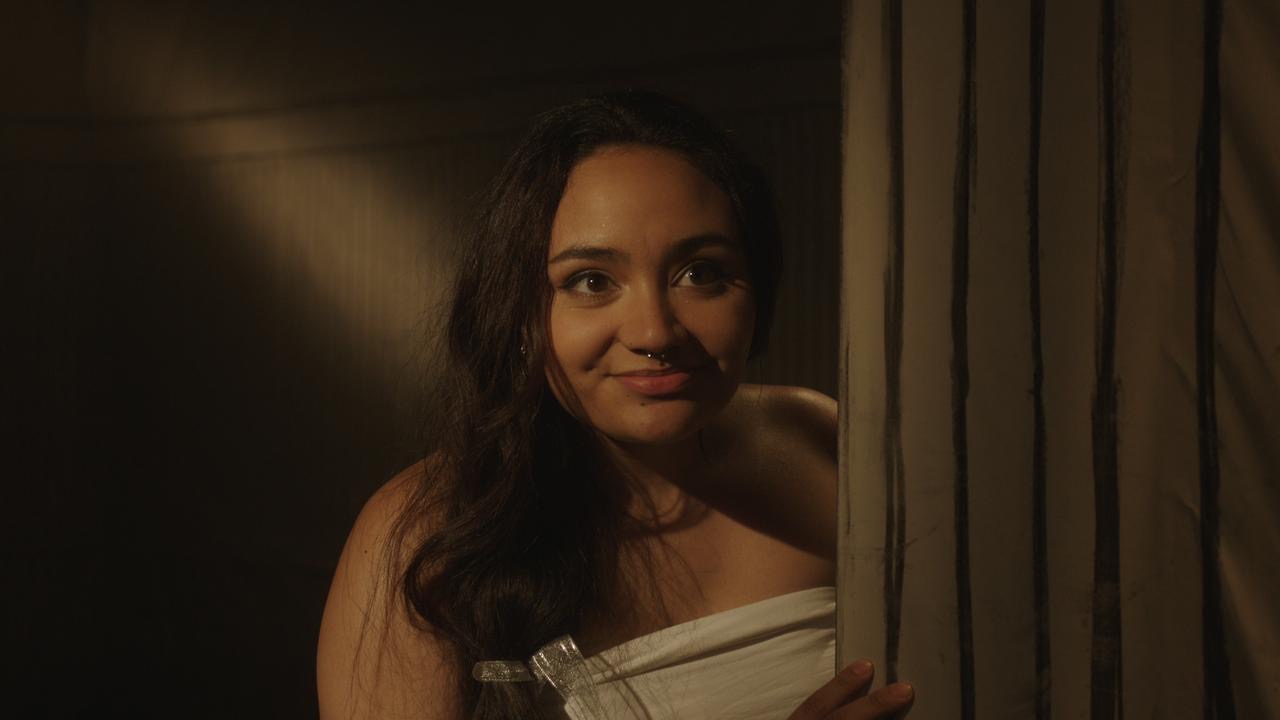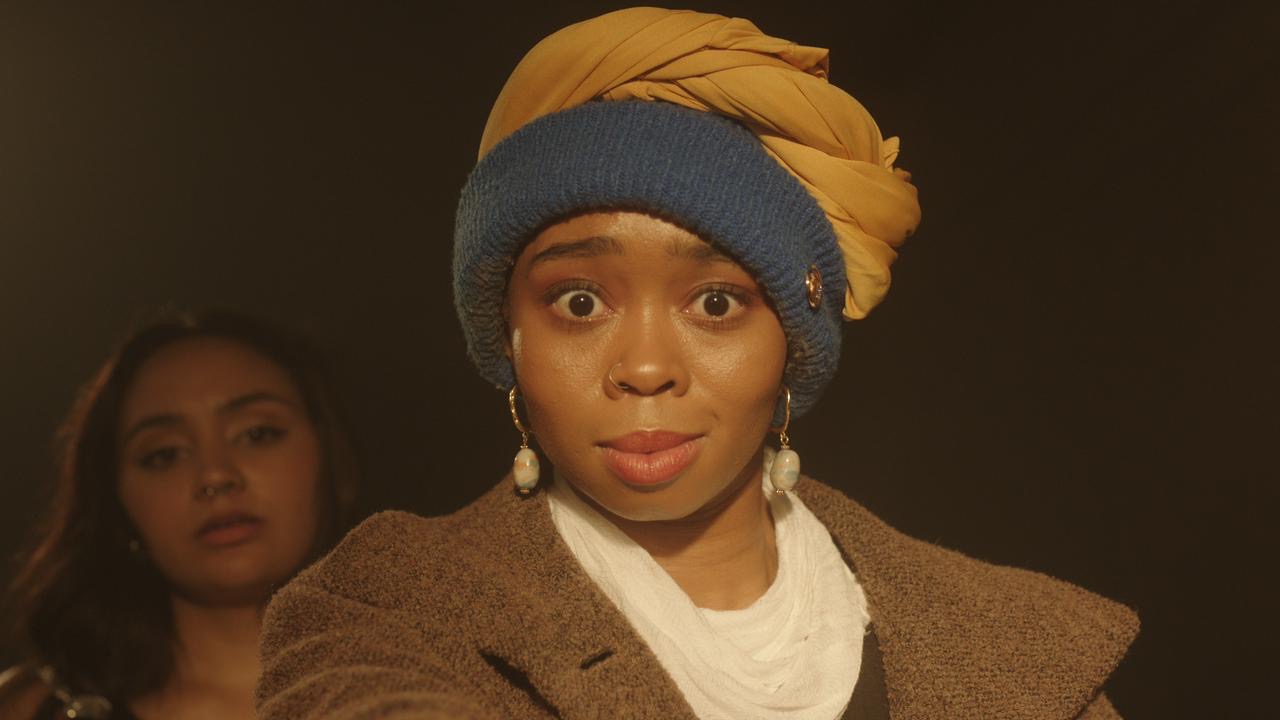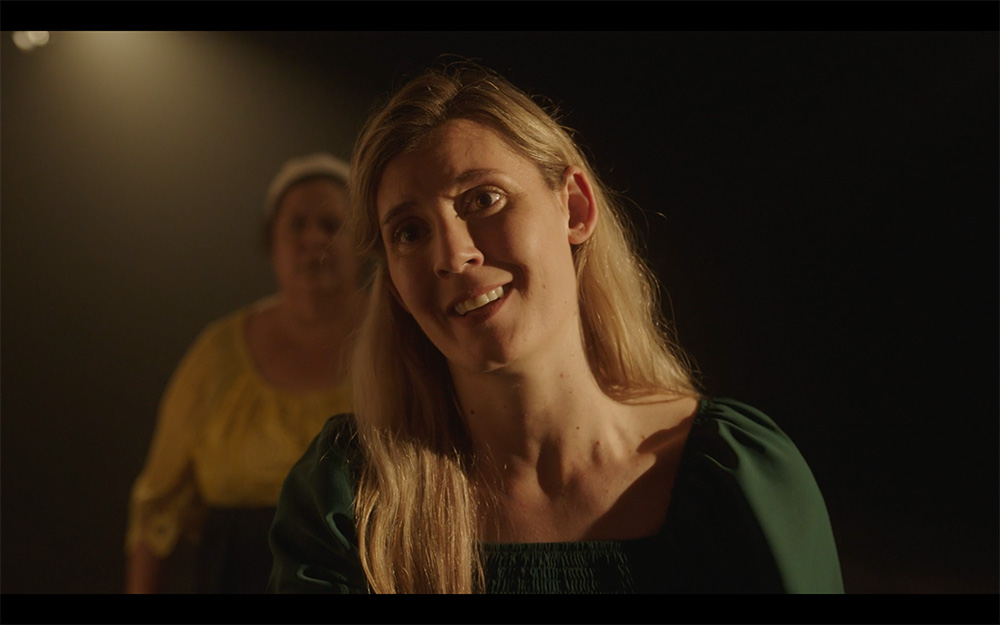



Short Film Project – Rising Filmmakers: O, Griet! Sy’s droog
In O, Griet! Sy’s droog, the actors Char Carrie from Suidooster fame, Karin van der Laag, Letolo Sekano and Ronel Stander draw viewers into a new dimension. In this short film, the characters find themselves captives in framed paintings, each depicting a different version of society’s ideas on women. To escape from the confines of the frames seem impossible … Until a girl with a pearl earring arrives with new perspectives on their situation.
Zandélle Meyer and Anje Barkhuizen, the directors, talk about the artworks that inspired the characters, and how art can stir emotions.
Explain the meaning of the title and how you decided on it.
Anje and Zandélle: The film originated from a ten-minute theatre piece we wrote in our final year as Drama students at Stellenbosch University. It was written in English with the title Before She Dries, which refers to the drying portrait of Griet, our protagonist.
When we adapted it into an Afrikaans screenplay for the Silwerskerm Festival, we decided on the title O, Griet! Sy’s droog. The title can be read as a polyseme, and we were hoping that it would catch viewers’ attention.
Each of the four characters in the film has something special that draws viewers’ attention. What was the inspiration for each character?
Anje and Zandélle: Each character represents a version of a famous artwork, as well as typical South African characteristics. Griet is based on The Girl with the Pearl Earring, Denise on The Arnolfini Portrait, Aunt Miemie on The Milkmaid by Johannes Vermeer, and Venus on Sandro Botticelli’s The Birth of Venus.
While it brings a unique twist to each character’s story, it also links them to the universal themes of the art works, and subsequently the themes of the film. Each of the characters represents different roles of women in society.
Griet is the young, independent, hip and woke woman, Venus the femme fatale, Denise the mother figure and Miemie the dutiful woman.
Where does the idea for the film come from?
Zandélle: During the holiday before our third year, I wrote a poem with the title ‘The girl without a boyfriend with a pearl earring in her lobe’. I read the poem during a brainstorming session with my group, and they liked it. We were four girls in the group, and we had to write a play about four female characters. That is why the story is not about one female character with a pearl earring, but of four women who were literally captured in paintings after receiving a string of magic pearls from an artist.
We kept the essence of the original storyline, but Anje and I refined the narrative when we decided to enter it for the Silwerskerm Festival. We received extensive guidance from Corné van Rooyen and Quanita Adams to convert it into a short film screenplay.
Why did you decide to use animation?
Zandélle: I love multimedia and I wanted to include animation from the start, as O, Griet! is an art film. During pre-production we realised that stop animation is time-consuming and that we didn’t have to animate the entire film. When making a film, especially in the magic realism genre, it is good to repeat certain elements in order to develop a distinctive style. To create an artistic atmosphere, we tried to emulate the feel of William Kentridge’s charcoal animations.
The idea of interpreting art through art (the film) is striking. Why do you think art evokes such strong emotions?
Anje: I am not an artist myself, but my best friend and housemate Lindie Grünewald, who created the portraits for the film, taught me a lot about art. The experience deepened my appreciation and love for art, which played an essential part in creating the film.
Art challenges perceptions, it inspires change, and it brings people from different backgrounds together. That is why it has such a profound emotional impact. Film brings our fantasies to life, but art, although static, has the unique ability to tickle the imagination. If artworks were alive and we could enter the realm of paintings, it would be a fascinating experience.
Zandélle: My mother is an artist; as a child, art galleries were like a second home to me. I think every person looks at art in a different way, from different backgrounds and experiences, therefore art evokes different emotions.
